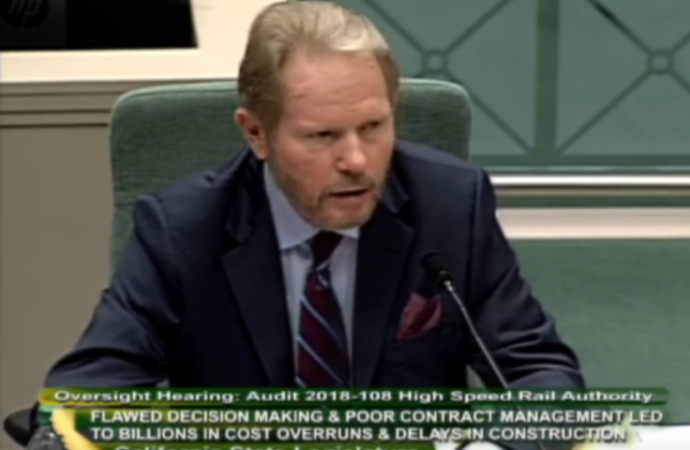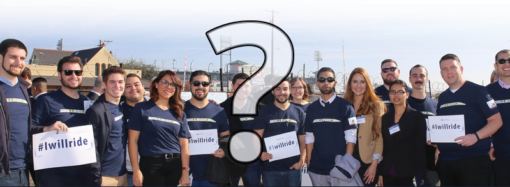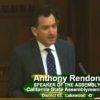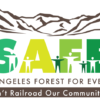High-Speed Rail Audit: Next chapter or end of the story?
On Thursday, November 29, 2018 the Assembly Transportation and Joint Legislative Audit Committee met and high-lighted the inadequacies of the high-speed rail project found in the Audit report. Tom Richards, Vice Chair of the HSR Authority Board represented the Rail Authority and Joe Hedges, Deputy Director and COO, hired only in February 2018.
Unlike other meetings that operated strictly along party lines, this one was very close to a non-partisan approach except for Senator Jim Beall (D San Jose) who was more interested in figuring out how to deliver a project “on time and on budget.” He seemed to ignore the astounding audit results of cost overruns for three active Central Valley projects which reached $600 million in June 2018 and it estimates an additional $1.6 billion in change orders is yet to be processed.
Please note that these audit results were the product of a very limited scope, primarily looking at the contract management. The auditors were not able to delve into the viability of the project. There are many unanswered questions such as: Can the train make the speed and/or the time required. The current audit didn’t examine the ridership or the maintenance numbers for the train. Will train travel be competitive with plane travel? Most importantly will the train be able to operate without a state subsidy.
Deliberate Plan: Fire, Aim, Ready
The Auditor revealed, “Despite being aware of risks associated with beginning construction before completing critical planning tasks, the Authority began construction in 2013—a decision that has led to contract changes, project delays, and cost overruns.”
Why did the Authority move forward with construction when they well knew the design/build plan wasn’t developed to a satisfactory level, when they did not have the land purchased needed to start the construction, when they did not have the utility relocation agreements settled to give sound cost estimates? Apparently, there were two reasons. The Auditor revealed one chief engineer, obviously in a moment of complete frankness, revealed that they had to show something. They had to begin construction since there were groups trying to stop the project. The other major reason was the need to begin spending the federal grant dollars. It was the only source of funding they had that would allow them access to Prop 1A money, and that federal grant money had a very tight spending deadline.
According to Vice Chairman Tom Richards, though he agreed with most of the audit findings, he disagreed with the auditor’s description of why they started early. He said they made the decision with a “clear understanding that it came with a number of unknowns and risks for additional costs.” “They weighed the decision against the risks that came with moving to construction early instead of deferring construction until costs were better well defined.” Richards reasoned that If they had turned down the ARRA (American Recovery and Reconstruction Act) fund money ($2.6 billion) and 2010 grant $929 million- they wouldn’t have been able to start at all. In hindsight, he didn’t seem to regret the board’s decision. He felt it was worth the jobs brought to the Central Valley. In addition, they were the beneficiary of lower cost estimates back then. Richards felt the state was able to use $3.5 billion to build assets despite approximately $500 million lost due to delay.
He debated the Auditors categorization of losing $600 million plus further cost overruns of $1.6 billion. He explained there was a difference categorizing these dollars as cost over-runs vs. legitimate project costs or undefined scope since the real project costs would have been accounted for in estimates had they been known. He admitted that contingency and provisional funds were under represented, and much higher than contemplated. Richards admits to $100 million in delay fees and could have another $350 million in delay costs. He explained they were held up more than a year due to litigation.
Bottom line, whether the dollars were categorized as cost overrun or a cost not accounted for due to the early construction start, those dollars still adds more cost to the project and were change orders.
There is a federal audit underway by the US Inspector General’s office that is examining the spending of federal dollars. It is due in the Spring and will reveal what they think of the contract administration by the feds as well as the spending practices of the Authority.
The federal grant dollars vs. spending state matching funds
Because of shortage of cash since the bond funds were frozen due to the lawsuits, the federal government allowed their grant funds to be spent first, amending the Authority’s contract to allow for what was called a taper match. It is strange because it was requested and turned down in prior years. Here is a quote from the letter dated May 25, 2011 from Roy Kienitz, Under Secretary for the Department of Transportation (DOT). He responded to a request by then CEO Roelof van Ark. First, Kienitz refused an extension of time to use the federal funds past September 2017. Next he specifically said, “On the matter of using federal funds upfront to postpone the use of state matching funds, we hope you will understand why this is not feasible. Both the fiscal 2010 appropriations law and the FRA grant commitments require matching funds as a prerequisite for this project to move forward. California was awarded funding based in part on the impressive state match promised in the grant application.”
Roy Kienitz left the DOT in December 21, 2011 and joined Parsons Brinckerhoff, the Authority’s management group as a consultant. The issue of funding the fed money up front was reconsidered and the contract was amended to allow up front spending. By the way it is a common practice for DOT and FRA people to move to large consulting projects but somehow it doesn’t feel right. At least two others involved with the high-speed rail project planning did so as well, Karen Hedland and John Porcari- both moved to Parsons Brinckerhoff. By the way before Jeff Morales, the prior CEO for the HSR Authority, he was an executive with Parsons Brinckerhoff, supervising the project.
Risk of a federal claw back:
The auditor’s report made clear that the state would have to spend the state match at double the rate they had done in the past. And they would have to do this for the coming four years or risk giving back as much as $3.5 billion. Frankly at this point they have spent $2.6 billion of ARRA funding, the other $929 million has not and cannot be spent until they finish their match on the ARRA funding. So, it’s highly unlikely the Rail Authority would ever be in danger of having to give back the whole $3.5 billion.
Tom Richards, Vice Chair of the HSR board said he also had confidence that they would be able to get their matching funding spent by the December 2022 deadline. He said people doubted their ability to spend the federal grant by September 2017 but they did it. When questioned by Assemblymember Jim Patterson (R-Fresno) about leaving Fresno with an incomplete project, or a rump railroad as Patterson says, Richards had no worries. He thought that they would be able to complete something of independent utility that Amtrak could use if the project was stopped or delayed in building the rest of the project. He acknowledged that the cost for that 119 miles rose from the Authority’s estimate in January 2017 of $7.8 billion to $10.6 billion in the 2018 business plan.
Note: The business plan shows the higher estimate of $12.2 billion for that 119 miles, which later Richards admitted to. However, in 2012 that same segment had a cost estimate of $6.2 billion for 130 miles so the cost increased and the mileage diminished.
What Jim Patterson worries about is exactly what then Senator Joe Simitian worried about, “If we don’t have additional funds forthcoming, if we have no more money from the feds, private investment or another bond measure, at the end of $ 6.2 billion we have 130 miles of conventional rail. That investment that gives us forty-five minutes off the commute time [of the existing Amtrak line] and the value is $15 million a year which is not a great return on investment for $6.2 billion. Absent of additional investment we’re left with a stranded investment with modest value.” Simitian voted no for the funding of the project in 2012. Senate Budget Subcommittee: April 18, 2012.
Independent Utility vs. Usable Segment
Let’s stop here for just a minute. The definition of independent utility is in the federal contracts only. The feds required a Plan B or backup plan if the high-speed rail project didn’t move forward in order not to be perceived as risking federal funds. They settled with the Authority on improvements for Amtrak as the back-up plan.
There is no such terminology in Prop 1A. The state proposition requires that each useable segment at a time is built to run high-speed rail trains and operate without subsidy. The proposition requires that the Authority have all the money for each segment they started. Richards said they have enough money to build the 119 miles in the Central Valley. 119 miles is not a usable segment according to Prop 1A. When the public voted on Prop 1A in 2008 it did not vote for improvements to Amtrak. See page 3 of a Peer review letter which explains the difference between an Initial Construction Section (the 119 miles) and the Initial Operating segment required in Prop 1A. It’s under the title ICS/IOS Distinction. Those initials mean initial construction segment and initial operating segment. This correspondence represents one of the most forthright documents the Peer Review Group wrote. http://www.cahsrprg.com/wp-content/uploads/sites/15/2018/08/CHSR-Peer-Review-Group-Comments-on-2011-Funding-Plan.pdf. There is a typo on page 6 when it refers to a 2010 Business plan, it was supposed to be the 2012 Business Plan.
Richards acknowledged during the Audit hearings, they couldn’t build all the way to the Silicon Valley, [even loosely defined as San Jose], since they had no money for the Pacheco tunnels required to connect the Central Valley and the Silicon Valley. Note while they are required to go all the way to San Francisco Transbay terminal they do not have the funds or environmental clearance to do so since some improvements to the tracks have to be made, possibly passing tracks have to be added before high-speed trains can operate. Any improvements made from San Jose to San Francisco right now are from Caltrain’s electrification project which does have environmental clearance.
Lack of documentation:
The audit also found improper documentation on contract issues. There were only 3 state employees out of 56 people managing $5 billion in contracts and there was little documentation noted on bills that were paid on the majority of invoices processed. Richards said, that he was embarrassed about this situation in that the contract managers were not following established policy. (full audit results found at the end of this article as well as a link to the entire four-hour meeting)
Dan Richard, Board Chairman gets blasted:
After the 3 and a half hour mark of the Audit Review meeting, probably after most had tired of listening to the long meeting, Assembly member and chairman of the committee Jim Frazier, a Democrat, made a bold statement. He announced that Jeff Morales, former CEO, was let go and it was a mistake and instead Dan Richard’s should have been let go. Frazier believes that Dan Richard should submit his resignation since it was Richard who was ultimately responsible for the condition of the project. He also felt the project would cost more than $100 billion dollars. See the one minute YouTube. https://www.youtube.com/watch?v=aVfVSo-PKrI&feature=youtu.be
Will the project make good on promises in Prop 1A?
Assembly member Jim Patterson, co-sponsor of the audit, a project opponent, brought up an obvious question to both the Auditor and High-Speed Rail Vice Chairman Tom Richards. Did they think that the high-speed rail authority would make good on the promises to the public in Prop 1A, that is the speed, the time and the competitiveness of the high-speed rail train as compared with other travel modes? It was not in the scope said the Auditor but there was concern on her part. High-Speed Rail Vice-Chairman, Tom Richards, did think they would make good on those promises.
Blended systems good for cost cutting but not so good for travel time:
The Audit results pointed out that the Authority obtained some savings realized by blending rail systems, that is use of the same tracks by more than one rail group but there was a downside. Sharing tracks makes for less trains to operate and at slower speeds as they go through cities. Richards thought that all promises made to the public in Prop 1A could be made regardless of the blending. The Authority said they have no more opportunities remaining for blending systems to offset some of the unexpected expenses.
Note there is no schedule or timetable that will allow revenue passengers to travel less than 3 hours and 32 minutes. (per draft 2018 Business Plan). A revision was due in the final plan to lower that cost. However, in the last four years, no train has been scheduled less than 3 hours and eight minutes. With added segments sharing tracks with other rail lines, it’s hard to believe that the travel time would drop, it seems it would only increase.
Prop 1A says the time is measured with paying customers on board. The numbers Mr. Richards is talking about is a computer-generated program that shows that the train can make it if it was designed to achieve that result but the Authority has no intention of scheduling a train that can go non-stop from San Francisco to Los Angeles Union Station. The computer program measuring the time from LA to San Francisco (4th and King- wrong location) and Tom Richards says they can make 2 hours and 37 minutes. Other experts disagree.
There are other specific times to be met between paired cities such as 30 minutes between San Francisco and San Jose, a blended corridor. Caltrain’s published documents show they cannot make that timeline. Even in the past then CEO Roelof van Ark told a Senate committee they could not make the trip from San Francisco to San Jose in 30 minutes. It was also van Ark who promptly disappeared after he came out with the honest business plan in November 2011 and estimated the cost would be $98 to $117 billion. It slipped in cost to the mid-sixty billion mark in the final 2012 plan due to the blended system (sharing with Caltrain and Union Pacific freight trains) being introduced between San Jose and San Francisco.
Back to travel times, here’s what AB 3034 says in no uncertain terms.
(b) Maximum nonstop service travel times for each corridor that shall not exceed the following:
(1) San Francisco-Los Angeles Union Station: two hours, 40 minutes. (2) Oakland-Los Angeles Union Station: two hours, 40 minutes. (3) San Francisco-San Jose: 30 minutes. (4) San Jose-Los Angeles: two hours, 10 minutes.
(5) San Diego-Los Angeles: one hour, 20 minutes. (6) Inland Empire-Los Angeles: 30 minutes. (7) Sacramento-Los Angeles: two hours, 20 minutes.
Why does It matter? Because anything over 3 hours makes the train non-competitive with plane travel. So, while the Authority prepares computer runs that show they can make the times, the consumer will see the real train schedule and if it takes them more than 3 hours, unless they are just fearful of flying, they will head right for the airport.
Cost to build
Assembly member Vince Fong asked Richards about the cost of the plan, pointing back to the first estimate the public saw at the time of the vote which was around $42.6 billion and today it is ranges from $77 billion to $98 billion. Richards explained that a lot was not known back in the early days. Two notes on this. The first estimate in 2009 included both Phase 1 from San Francisco to Los Angeles and phase Two including San Diego and Sacramento. The estimate indicated in the 2018 business plan only includes phase one so the difference is even wider.
As far as the cost, Peer Review Director Lou Thompson, told the Legislature in earlier meetings after the 2018 Draft business plan was produced this year, the legislature should count on the higher estimates in the business plan.
At the Audit Review meeting, Vince Fong had Richards confirm they didn’t have the money to connect even the first segment from the Central Valley to the Silicon Valley since they were lacking the money for the Pacheco tunnels. He said that segment alone would cost about $54 billion which he confirmed at another Legislature meeting with CEO Brian Kelly. Richards did not protest that fact. Note: The cost of the Central Valley to the Silicon Valley is supposed to be in the range of $25 to $36 billion without the Pacheco tunnels. If $54 billion is right, that means they have at least an $18 billion gap.
This highlights how expensive the Phase One from San Francisco to Los Angeles could be, since heading south through the Tehachapi mountains is predicted to be enormously expensive. There are no Phase Two numbers found in the business plan. Envisioning a cost of over $100 billion is not unreasonable since heading south is expected to be the hardest to construct because extensive tunneling is required.
What’s next?
So, what is the bottom line, what will the Authority have to do to re-gain trust? The Audit committee recommended that the Authority will now be required to report to the Legislature every 3 months to follow their progress correcting the issues from the audit. Currently they send a report every other year. On the off years, the Rail Authority does a business plan. There was also discussion of a state inspector general overseeing the project and reporting to the Legislature.
Even some of the most elite educators also ask the new governor to take a pause.
“The next governor should conduct a soup-to-nuts project review to re-evaluate the project’s current projected costs and whether those costs are outweighed by the project’s intended benefits,” said University of California President Janet Napolitano, who noted many of the project’s potential economic and quality-of-life advantages. “Such a review would improve the public’s confidence in high speed rail. In short, the next governor should take a deep breath, have a project review conducted, and then decide whether to proceed.” she said in a Sacramento Bee article.
Remember the current audit scope was a trade-off for getting something, anything approved since several audit requests were turned down in the past. I wrote an article last March about the absence of key items missing from the audit scope. http://www.thehamiltonreport.com/the-bipartisan-audit-a-view-post-publication-of-the-2018-draft-plan/
Governor-Elect Newsom should consider directing the Audit committee to continue its work with an expanded scope so he will have a better view of what the total condition of the project is. This would be a pause, before expanding the project beyond the 119 miles in the Central Valley. After all, what was studied, primarily contract administration, is the tip of the iceberg, there is so much more to examine.
In order to get a true picture of the condition of the project perhaps the new governor should extend the audit to include the question of viability. Can what is being built fulfill the promises made in Prop 1A and ultimately will what is being built require a state subsidy. The Auditor may have to call in UC Berkeley Transportation, the organization the Senate calls on to review transportation issues, to review the more technical issues of the project.
A change in management might be necessary. Finishing what was started in the Central Valley along those 119 miles might be needed in order to avoid the possible claw back of the money spend already from the ARRA grant. This was suggested by the Peer Review group with their letter on page 113 of the 2018 business plan. The specific reference is on page 115. http://www.hsr.ca.gov/docs/about/business_plans/2018_BusinessPlan.pdf
The federal government will come out with their audit concerning spending of federal dollars and contract administration sometime this Spring which will certainly bring a new round of questions.
Reference material:
The Auditor Report
Though many people were stunned by the devastating state auditor’s report, it was only a partial view of the project, the tip of the iceberg so to speak. The full audit is located at: https://www.bsa.ca.gov/pdfs/reports/2018-108.pdf
A short fact sheet is located at http://www.auditor.ca.gov/pdfs/factsheets/2018-108.pdf. It concluded contract management was poor and wasteful spending occurred due to the premature start to the program. Currently the project has to make a deadline in 2022 to spend Federal grant money or risk giving it all back. It was given an extension which was originally slated to end in September 30, 2017. The extension was not to spend the federal dollars; it was to spend the 50% matching funds they contractually obligated the state to spend. The Authority received $2.6 billion in funding through the American Recovery and Reinvestment Act (Recovery Act) in 2010 to begin planning and construction. In 2011 it received an additional $929 million in federal grant funding, bringing total federal support to $3.5 billion. They have not spent the $929 million and cannot have access to those funds until the Authority invests their matching funds for the $2.6 billion ARRA grant.
See other articles written in regard to the Audit:
Full Audit hearing: https://www.youtube.com/watch?v=GktAePJjrDo
LA Times: https://www.latimes.com/local/california/la-me-bullet-train-audit-20181115-story.html (Ralph Vartabedian)
Fresno Bee: https://www.fresnobee.com/news/local/high-speed-rail/article222399890.html (Tim Sheehan)





